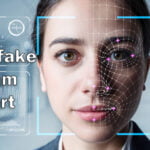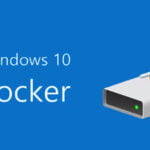License Plate Capture Cameras, License Plate Recognition, LPR Camera
What are license plate recognition cameras? License plate recognition, sometimes shortened to LPR, is a feature on some cameras that allow them to detect, read, and store video of a car’s license plate. They are used primarily for traffic monitoring in parking lots, gated security entrances, drive-throughs, parking garages, and toll roads and allow the camera to capture a license plate number which is then stored in a database. They are usually mounted on street poles, streetlights, highway overpasses, or affixed to a building’s structure.
Planning your LPR Camera Installation
One of the first things to consider when installing a license plate camera is where it will be mounted. LPR cameras are designed to focus on a single lane of traffic with the sole purpose of recording license plates. Because of their design, they are not good at capturing wide-angles or larger areas. We recommend having additional cameras that will be used to capture details such as passengers, make, model, and color of a vehicle. With that in mind, we recommend installing the camera in a location facing a choke point or area where cars and vehicles are forced to move through. The camera will need to be facing the rear or front of vehicles so they have a clear view of the license plates.
We recommend installing the camera somewhere between 6-18 feet from the ground and no more than a 30 degree angle between the camera and the license plate you are trying to read. If the camera is not mounted properly, it will have issues providing a clear view of the plate and could prevent you from capturing the license plate. For that reason, cameras facing directly head-on to oncoming and outgoing vehicles will have the best chance at capturing license plates.
Lighting should also be taken into consideration when planning the install. Well lit areas may have lower hardware requirements than lower lit areas. A good LPR camera however, will be able deal with low-light areas using infrared.
License Plate Camera Hardware Recommendations
IP Rating – Any LPR camera you purchase should be rated at least IP65. This means the camera will offer complete protection from dust and can withstand at least low pressure bursts of water. A higher second digit rating will provide even better water protection. For instance, IP67 will provide temporary protection against a camera fully immersed in water for 30 minutes, basically making it weatherproof.
Resolution – A resolution of at least 2MP will work for most installations. A higher megapixel count will give larger and clearer images if needed.
Lens – A motorized lens will allow you to control the focus and zoom of the camera without directly handling the camera. This makes it easier to adjust the field of view (FoV) and focus of the camera when trying to get the optimal view.
SD Card – We recommend using an NVR instead of an SD to store images and data, but they can still be used as a backup in case of an NVR failure.
Warranty – Look for cameras with at least a 3 year hardware warranty.
Misc – There are many more hardware options like shutter speed, wide dynamic range, and video compression standard, but will vary depending on your needs. For instance, vehicles traveling at 5 MPH vs 60 MPH will have different exposure and shutter needs. We recommend talking with an license plate recognition camera installer to see what your specific needs are.
License Plate Camera Installer
If you are looking to install an LPR camera, specialized camera, or security cameras in general, call us at (931) 771-1149 to go over your needs and schedule a site survey for a quote. We routinely install cameras for big box stores and retail, restaurants, warehouses, hotels, and manufacturers in Western Kentucky & Tennessee.




